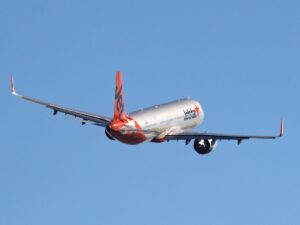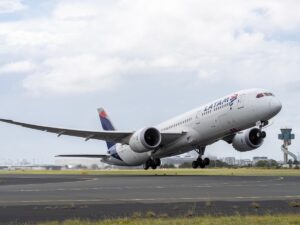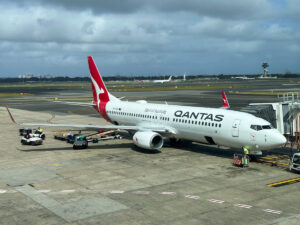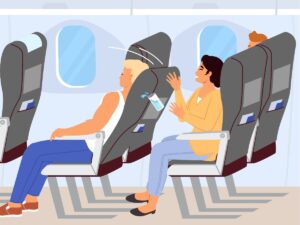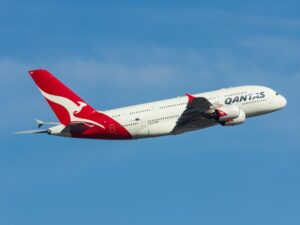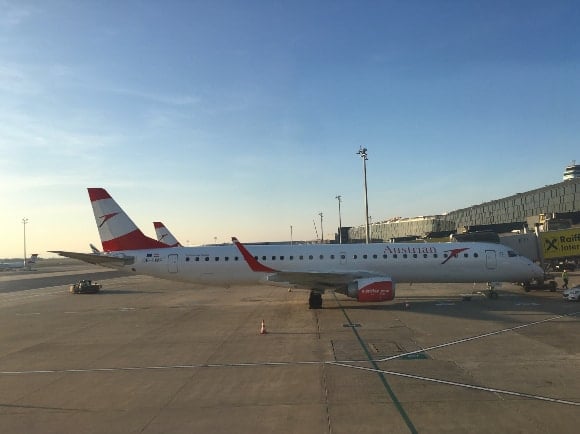
Austria has followed India in implementing minimum airfares to protect airlines against low-cost carriers dumping the market with below-cost flights in the wake of the COVID-19 crisis.
Austria implements minimum airfares
The Austrian government yesterday announced a bailout package for Austrian Airlines, which is owned by Lufthansa. As part of a binding agreement, the Lufthansa Group agreed to retain and expand the Austrian Airlines hub of Vienna for at least the next decade. But the Austrian government also plans to legislate minimum airfares in Austria to prevent low-cost airlines such as Wizz Air and Laudamotion (which is owned by Ryanair), which both have bases in Vienna, from pushing Austrian Airlines out of business with anti-competitive, below-cost airfares.
The Austrian anti-dumping law would prevent airlines from selling flights below the cost of the third-party taxes & charges, such as airport fees and government taxes, that apply to the ticket. This amount is generally around €40 (~$64) per round-trip ticket.
Earlier this year I flew with Wizz Air to Vienna on a flight that cost $16. I calculated at the time that the taxes & charges that applied to that ticket would have been $30, meaning the airline was losing money by selling tickets at that price. Of course, the business model of low-cost carriers is exactly this – to sell as many seats as they can, even if below cost, in the hope that most passengers will purchase additional ancillaries like checked luggage or food. But the days of ultra-cheap fares will soon be over – at least in Austria.
Additionally, Austria will add a €30 (~$48) tax on flights under 350km for environmental reasons. This will affect most domestic flights within Austria, including routes like Vienna-Graz (151km) and Vienna-Salzburg (269km). But flights between Vienna and Lufthansa’s hub in Munich are conveniently 356km in length. The Austrian government will also work directly with their national airline to replace domestic flight connections that can be completed by high-speed rail in under 3 hours and reduce the cost of train travel within the entire country to as little as €3 (~$5) per day.
Separately, Air France was recently forced to cut around 40% of its domestic flights in exchange for state aid. The French government has been pushing for domestic flights to be cut for environmental reasons, particularly on routes where high-speed trains are available.
India’s temporary minimum and maximum flight prices
It follows a similar move announced last month by the Indian government, which introduced both minimum and maximum airfares for domestic flights in India. The minimum airfares were similarly designed to protect Indian airlines from low-cost airlines flooding the market with loss-leading fares. The fear was that this could cripple some already-struggling Indian airlines, particularly state-owned Air India, at a time when they are already struggling to recover from the COVID-19 lockdown in the country.
Interestingly, India simultaneously legislated maximum airfare prices to prevent airlines with a monopoly on a route from exploiting demand from essential travellers or those trying to return home as movement restrictions were eased.
Flights between Delhi and Mumbai, for example, must currently cost between around $66 and $189. Furthermore, at least 40% of seats must be sold at a price below the mid-point of the permitted price range. But unlike the Austrian law, the Indian restrictions are only temporary and will expire 3 months after they were implemented on 25 May 2020.
The ACCC is monitoring airfares in Australia
Closer to home, the ACCC has previously said it is watching Qantas and Jetstar’s airfares “extraordinarily closely” to ensure the national carrier does not engage in predatory pricing against Virgin when it emerges from voluntary administration.
On one hand, there is a risk that a monopolistic Qantas could raise prices. On the other hand, Qantas & Jetstar could slash airfares during the post-COVID recovery period so much that a weak Virgin Australia simply cannot afford to compete. That could push Qantas’ only major domestic competitor out of the market. Qantas already tried a similar strategy with its “line in the sand” price war in the first half of the last decade, although that strategy was focused more on capacity.
On the other hand, some travellers believe Qantas may already be gouging essential travellers with unusually high prices, particularly on routes where Virgin is not currently operating.
As airlines globally emerge from COVID-19 lockdowns in their respective countries, expect more scrutiny on airfares. They will need to be high enough to ensure weaker airlines are not crippled, but low enough that people can still afford to travel. More government intervention may be required in some markets to achieve these outcomes.

